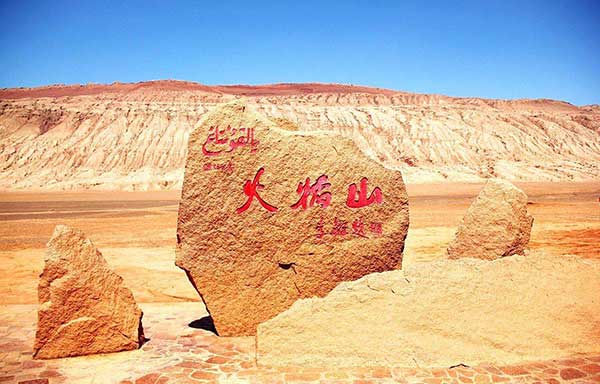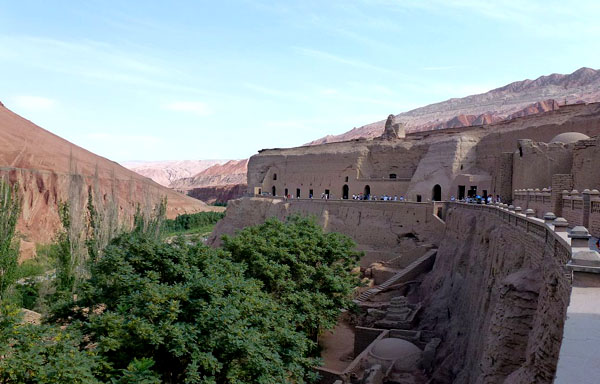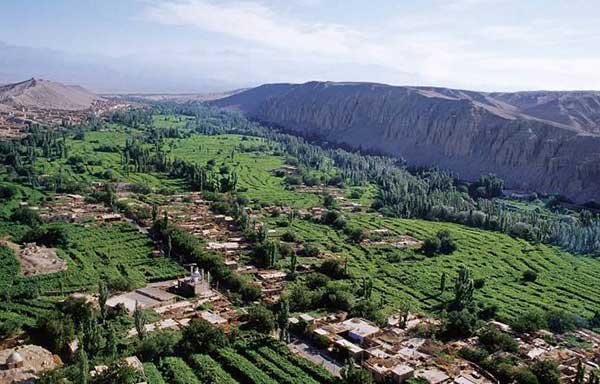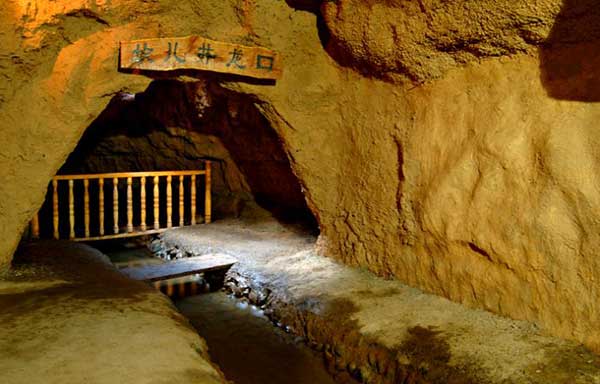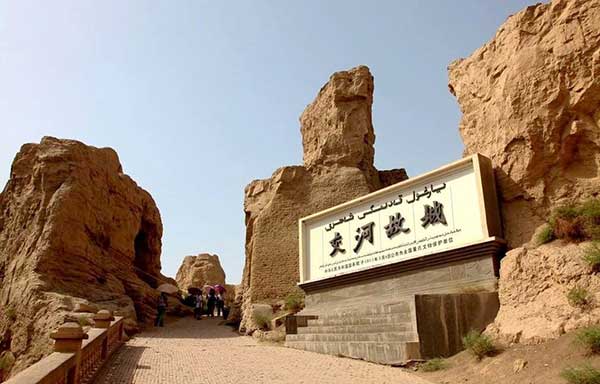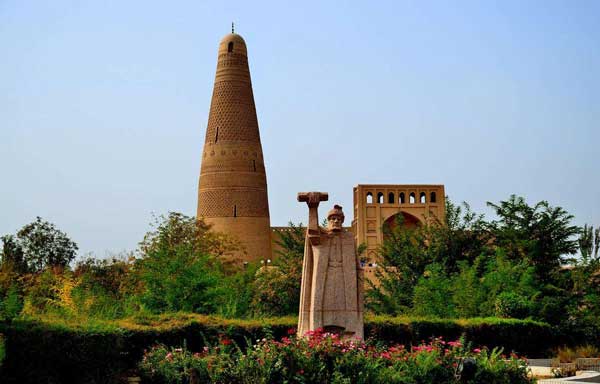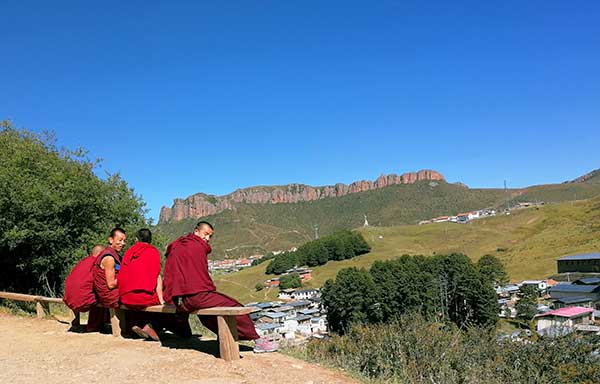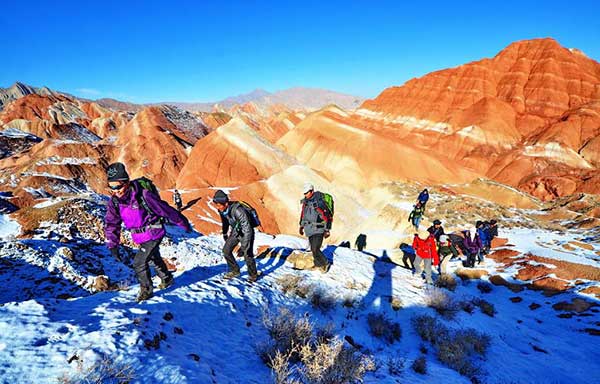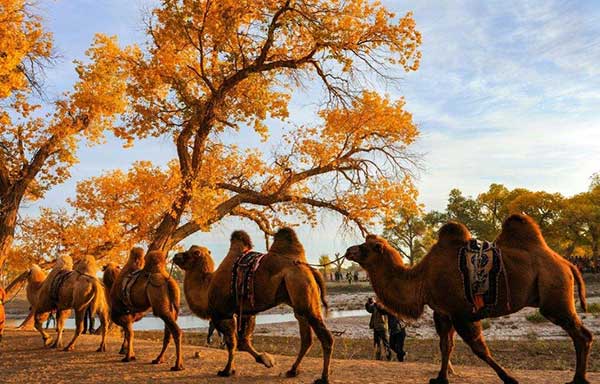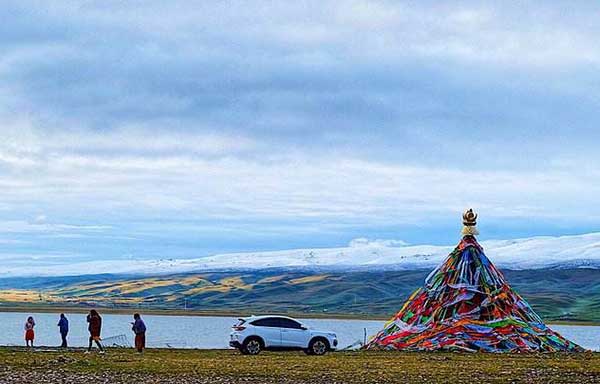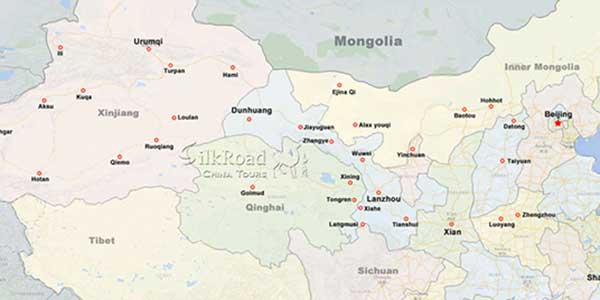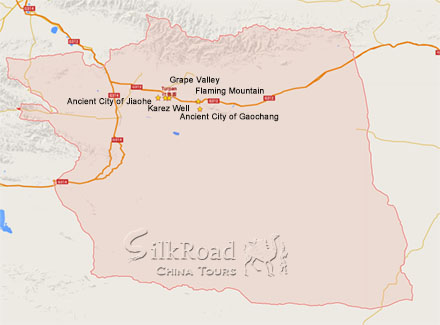 Turpan is an old city with a long history. Traces have been found of humans living there, dating as far back as 6,000 years ago. The city was known as Gushi in the Western Han Dynasty (206BC-24AD); and in the Ming Dynasty (1368-1644), it got its name Turpan, which means 'the lowest place' in the Uygur language and 'the fertile land' in Turki. Lying in the Turpan Basin, the elevation of most of the places in the area is below 500 meters (1,640 feet). Turpan is the city with the lowest elevation in China.
Turpan is an old city with a long history. Traces have been found of humans living there, dating as far back as 6,000 years ago. The city was known as Gushi in the Western Han Dynasty (206BC-24AD); and in the Ming Dynasty (1368-1644), it got its name Turpan, which means 'the lowest place' in the Uygur language and 'the fertile land' in Turki. Lying in the Turpan Basin, the elevation of most of the places in the area is below 500 meters (1,640 feet). Turpan is the city with the lowest elevation in China.
Occupying an area of 15,738 square kilometers (6,076.5 square miles), Turpan City Prefecture is located to the southeast of Urumqi, the capital city of Xinjiang Uygur Autonomous Region. The city belongs to Turpan Region together with Shanshan County and Tuokexun County. It has a population of 250,000, made up of 21 different nationalities. Among these the Uygurs account for over 70% of the total number.
The city, which is also known as Huo Zhou (a place as hot as fire), is the hottest place in China. The annual average temperature is 14C (57.2F). It is reckoned that there are 152 summer days on average, and 28 really broiling days with the temperature above 40C (104F). Although the high temperature can be oppressive people can also get some benefits from it. The abundant sunshine gives the melons and grapes ideal conditions to grow. The fruit here is widely known for its high sugar content, especially the grapes. The place is praised as the 'Hometown of Grapes' and the Grape Valley is a good place to enjoy the grapes of hundreds of varieties. Apart from that, the locals are quite fond of sand therapy which has a history of hundreds of years. People lie or sit under sheds, burying their bodies in hot sand about 50C (122F) to 60C (140F). It is said to be a good way to treat rheumatism and skin ailments. There is a Sand Therapy Center in the northwest of the city which is popular among visitors.
Turpan is a marvelous city blending Western and Eastern religions and culture together perfectly. Its geographical position is rather important. Lying at the junction of the east and the west of China, it has been a key point on the Silk Road since ancient times, with a great number of historical relics as well as unique landscapes.
Flaming Mountain, which is mentioned in a classical Chinese novel The Journey to the West is the hottest place in China; Emin Minaret is the largest ancient Islamic tower in Xinjiang; and Jiaohe Ancient City and Gaochang Ancient City are witnesses to the long history of Turpan. Aydingkol Lake, at the bottom of Turpan Basin, is the lowest point in the country, and Astana-Karakhoja Ancient Tombs, Bizalkik Thousand Buddha Caves, Tuyu Valley are also popular attractions. Karez System is one of the four great irrigation system of China and it is a crystallization of ancient people's wisdom and the life source there.
As a city inhabited by minority groups, you can find Uygur snacks in the streets and lanes. Kebabs, Zhua Fan (Rice Eaten with Hands), Nang, Roast Lamb will make your mouth water. There are also many traditional drinks there, including milk tea, black tea, grape wine and mare's milk. The traditional handcrafts are exquisite and are worth collecting. Carpets, clothes, caps and knives are favorites, with distinctive folk characteristics.
Turpan is an important city along the ancient Silk Road and the transportation here is very convenient. It is considered to be the hub between Xinjiang and the eastern part of China. As well as the usual vehicles, there is a special 'donkey taxi' here. It is a kind of flatbed drawn by donkey. Visitors can sit and ride on the vehicle to get a broad overview from a leisurely look around the city.
The city has star-level hotels as well as economy hostels. Nearly all of them have their own grape wines and wineries. Visitors can take a walk or taste the sweet grapes under the grape vines. Traditional Uygur singing and dancing shows can be seen there, too.
Weather

Attractions in Turpan
Related Tours
General Information
Alias: Huozhou
Area: 70,049 sq km
Location: Xinjiang
Airport: 10 km from city
Train Station: 50 km from city
Population: 630,000
Relevant blogs
-
How did the name of Tianshui in Gansu come about?
The name Tianshui is very pleasant to the ear, and it reminds one of that exquisitely beautiful verse, "After getting drunk, one doesn't know if the sky is in
-
The 8th Silk Road Hotel Festival was successfully
On December 27th, the "8th Silk Road Hotel Festival" grandly opened at the Yujing International Hotel in Zhangye. This hotel festival gathered industry experts,
-
The Karez Irrigation System in Turpan has been sel
On September 3rd, at the 75th Executive Council Meeting of the International Commission on Irrigation and Drainage held in Sydney, Australia, the 2024 (11th bat
-
What is the connection between "dragons" and "s
In traditional Chinese culture, the snake has a dual identity of auspiciousness and danger. Ancient people believed that the snake not only possesses divine cha
-
Endangered Przewalski's Horses Spotted at Dunhuan
<p>In early February, a group of special "visitors"—the Przewalski's horses—appeared at the Dunhuang Yumen Pass scenic area in Gansu Province, a U
-
The Fourth Dunhuang Cultural Tourism Supplier Conf
On the morning of February 18th, the Fourth Dunhuang Cultural Tourism Supplier Conference in Northwest China commenced at the Dunhuang International Convention

